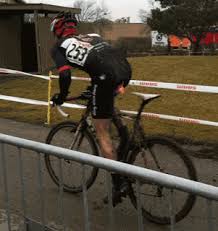Introduction
Quick Navigation
Athletes (across all sports) are some of the highest-paid professionals in the world. They are highly paid because they showcase the fun and entertaining games. However, they are highly paid because they are involved in a profession that requires constant physical pain. The training and exercising part of being an athlete is hard enough, and they also run the risk of being injured. Although athletes adapt to physical pain over time, they try their best to avoid any pain that is not necessary. When it comes to cycling, one physical pain that most riders encounter is saddle sores. Although all cyclers report a form of saddle sore now and then, it is more common with new cyclers and rookies. If you just started cycling and you want to know about saddle sores, then you are doing the right thing as an athlete. This article has been put together to show what saddle sores are, how to treat saddle sores and how you can avoid them. Enjoy!
What are saddle sores?
Saddle sores are irritations or infections in the area where the skin comes in contact with the saddle. These sores are majorly caused by chafing, sweating, stiffness on the saddle, and other factors. These sores, infections, and irritations happen to be a less favorable side effect for most cyclers. If you have been cycling for some time, that part of the skin area would have gotten used to your saddle, and you will no longer have saddle sores often. However, new cyclers experience these sores more often, and some might even describe it as a ritual for you to pass before you can become an experienced cycler. The excellent news with saddle sores is that it’s easy to manage if you follow a few instructions.
Saddle sores are a common experience among cyclers. If the effects are mild, it might mean you have to ride uncomfortably. However, if the products are painful, you would have to stay off your bike. We would explain how to treat saddle stores and avoid them subsequently.
How to treat Saddle Sores
- Take a break from cycling
When you first get saddle sores, the best thing you can do is stay away from cycling for two days or more. If the saddle sores are not very bad, you can still go riding, but you should limit it as best as you can.
- Take care of the affected area
Saddle sores will cure faster if you keep the infected area clean and dry. It would help if you washed it every 12 hours, dry it completely and leave it alone. Do not try to squeeze or scratch off the sores.
- Apply an anti-bacterial cream
After washing and drying the infected area, you should apply an anti-bacterial cream generously. You can go to your local chemist and order Sudocrem or any other anti-bacterial skin cream.
- See a doctor
You should know when to see a doctor. If you have tried everything above and the saddle sores are not clearing, you should see your doctor.
- Take vitamin C and zinc supplements
Taking skin-enriching supplements can help to cure saddle sores faster and even prevent it in the first instance. Athletes should always should high-end supplements.
How to Prevent Saddle Sores
- Pick the right saddle
Saddle sores are directly related to saddles, and that is the first place you should check if you want to prevent saddle sores. Saddles are built by different bike manufacturing companies, and one saddle can’t fit every cycler. Human beings have different body structures, and finding a saddle that works well with your body anatomy will be worth the initial trouble. It would be best if you did not go for the lightest, cheapest, or most fashionable saddle because these saddles are rarely the most comfortable. When it comes to saddles, you should go for the most comfortable. You should probably have a return option on your purchase.
- Use chamois cream regularly
Most cyclers use chamois crem regularly, and it is popularly known for stopping saddle sores. Once you apply it, it kills the bacteria responsible for inflammation of the skin, and it acts as a lubricant that reduces friction between your bike shorts and skin.
- Wear fitting cycling shorts
Your cycling shorts are designed with chamois, which protects the rider by offering a padding layer between your body and the saddle. If your shorts are not the perfect fit for you and you continuously feel uncomfortable, you should get a new one.
- Wash your biking shorts after use
Bacteria like to stay longer than invited, and that is why you can’t wear the same bike shorts two days in a row. Since cycling shorts are designed to be worn on the skin, you should treat them as underwear. They take up all the sweat that comes out of your genitals when you ride, and that is why you should wash them right away.
- Make sure your bike fits perfectly
Before you go on a saddle, make sure your bike’s seat height is the perfect fit. This will help to minimize side-to-side involuntary movement and keep you in perfect shape when riding.
- Don’t altogether remove the hair around your genitals
The hair around the genitals has a purpose. When you sweat, they soak up the sweat and the accompanying bacteria until you wash it up. When you remove all the hair around your genitals, the sweat and bacteria that come out when you ride will settle on your skin. This can accelerate saddle sores, and it is best you don’t altogether remove the hair around your genitals.
- Wash up immediately after biking
Each time you finish cycling, you should have your bath as soon as you can. This will help you wash up all the bacteria before they have the time to settle on your skin. Make sure you don’t sit around in your cycling shorts when you get home
Conclusion
All athletes will have to endure a fair amount of physical pain. Cyclers are athletes, and getting saddle sores is something you can avoid if you do the right things. This article has given you everything you need to get rid of saddle sores. We advise that you put it into practice.

